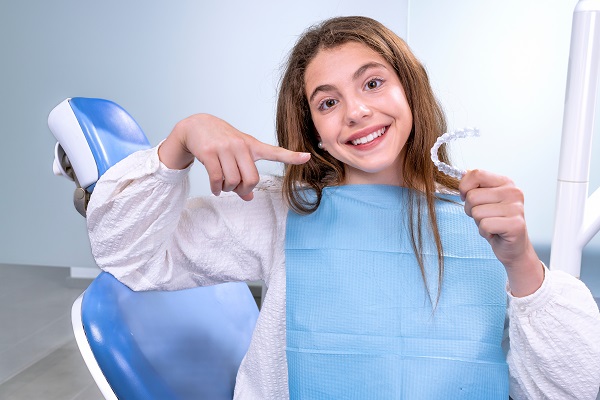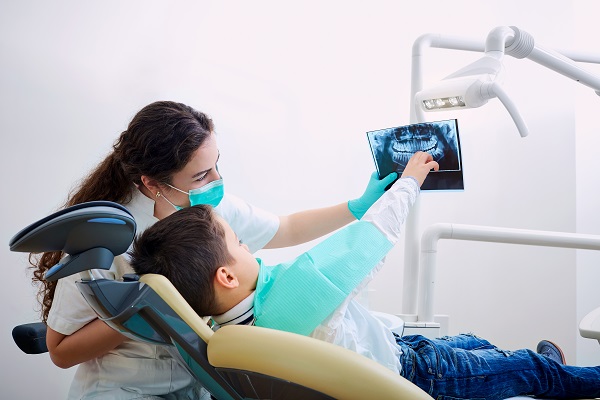Invisalign vs. Braces: Which is Better?

If you are in the market for a new smile, you may be faced with the dilemma of which to choose –– Invisalign® or the traditional metal braces.
Traditional braces are the most common type of orthodontic treatment for all ages. While they may be effective in straightening the teeth, some may consider them an unattractive option. With Invisalign®;, traditional metal braces now have a contender. Before making your decision, you must consult an orthdontist to determine if you are a good candidate for either Invisalign® or traditional braces. Each person has a unique set of teeth with needs and goals that may not be the same as the next person, so it's important to discuss these with your orthodontist beforehand.
What is Invisalign®?
Invisalign® is a possible alternative to traditional metal braces. They require an orthodontist to take molds and images of the teeth in order to create clear removable trays of varying sizes. Computer-generated, these aligners can correct mild or moderate incorrectly spaced teeth. Note, they are not used for children as their jaws and teeth are not fully developed.
Invisalign® is a trusted company. Always be wary of companies claiming they can create removable trays from images sent over the internet. One cannot properly determine if you are eligible through images alone. Doing so can not only cause a prolonged treatment but more importantly, the incorrect movement of your teeth.
What are traditional braces?
Traditional metal braces have been time tested and have proven to work very well. Brackets are situated on the front of the tooth with wires connecting each. While multiple visits may be required to properly move the teeth, traditional braces have succeeded time and time again.
While they may not be the most attractive option for some, there are alternatives such as braces behind the teeth (lingual braces). These braces are situated behind the teeth and cannot be seen. While some patients have reported having difficulty eating and sometimes annunciating, they give some patients comfort in knowing they are not as visible. Always consult an orthodontist to help you determine what type of traditional brace may be for you.
Traditional braces vs Invisalign® (Pros and Cons)
Traditional Braces (Pros): These have the highest treatment success rate and are time tested. Not only are they the most affordable dental option, but a widely offered orthodontic treatment.
Traditional Braces (Cons): Although quite effective, traditional metal braces can take roughly 1 to 2 years to correct your teeth. These braces are also highly visible, many times uncomfortable, and will need regular adjustments in order to correctly realign your smile.
Invisalign® (Pros): Invisalign® can correct your teeth in 4 to 6 months, which is considerably quicker than traditional braces. Invisalign® is much more comfortable and can be taken out during social situations, as Invisalign® is much more subtle.
Invisalign® (Cons): As a newer type of orthodontic treatment, Invisalign® can be a bit more expensive. It may also take more effort to follow the regimen, as it must be properly cleaned and taken care of.
Request an appointment here: https://www.drsallysong.com or call The Orthodontic Center Of Wayne - Dr. Sally Song at (973) 696-5220 for an appointment in our Wayne office.
Check out what others are saying about our dental services on Yelp: Invisalign in Wayne, NJ.
Recent Posts
Even though braces are common among teenagers, getting them is a new orthodontic experience for every patient. Teens and their parents tend to have many questions about braces and other orthodontic treatments for teens, when to get braces, and what having braces will be like. Here are some of the most common questions orthodontists hear…
The primary goal of early orthodontic treatment is to prevent and fix bite misalignments. Several causes, including genetics, the premature loss of primary (baby) teeth, and harmful oral habits (like thumb sucking) may lead to such anomalies. Orthodontic abnormalities might be congenital or occur during early childhood. Straight teeth can reduce the incidence of dental…
Invisalign® has changed how willing teenagers –– and everyone else –– are to start teeth straightening treatments. It provides an alternative to traditional metal braces that is virtually impossible to detect. Invisalign® treatments work the same way conventional braces work, the aligner trays exert a force on the patient's teeth pushing their teeth into better…
Oral health is foundational to good overall health. Through the help of an orthodontist and bite correction, difficulties with chewing or speaking can be overcome. The inability to ingest food or clearly articulate impacts both physical and mental health. Bite correction has the potential to change the course of an individual’s health and wellness.Changes in…


